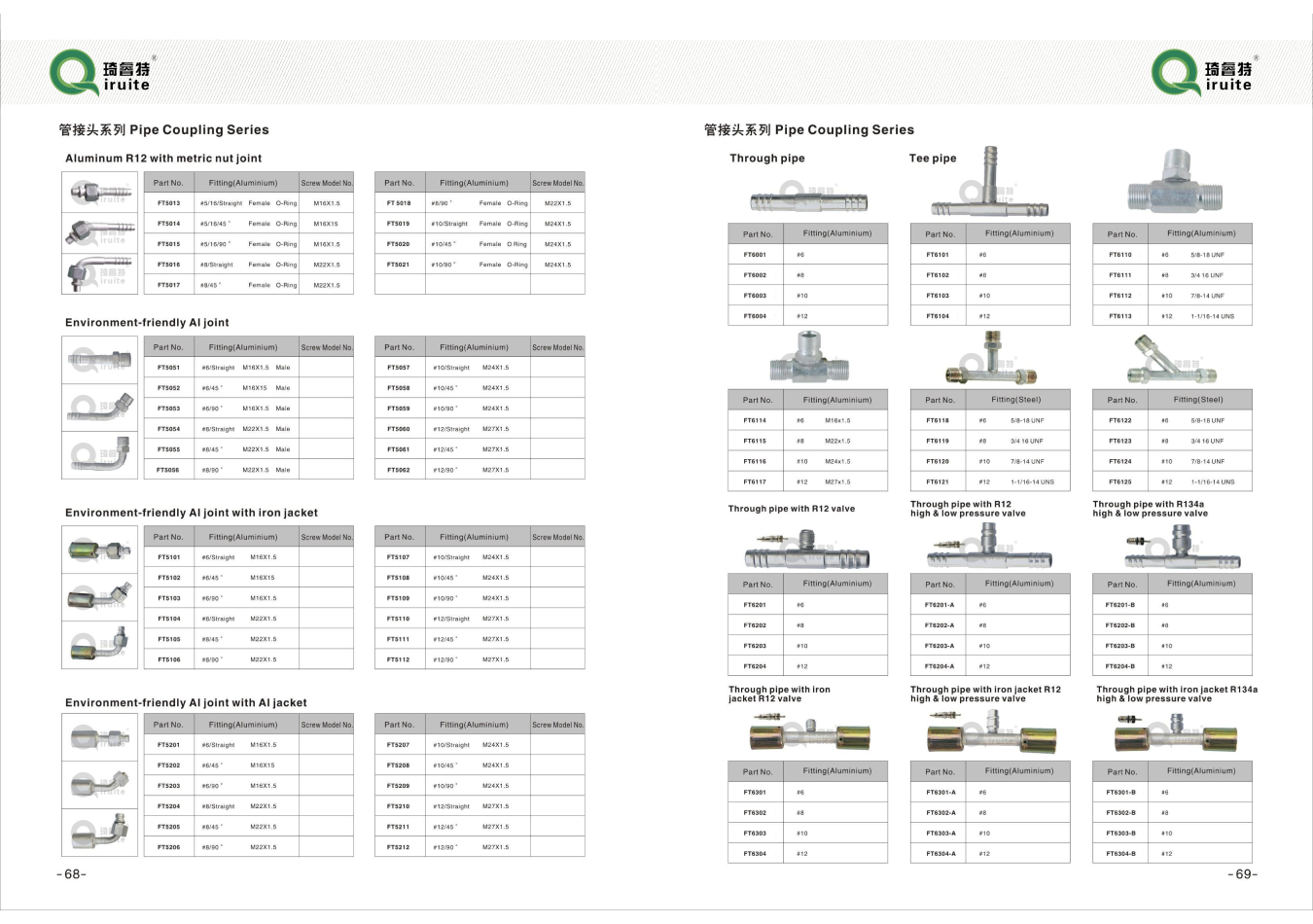R134A Refrigerant Charging Hose Kit for Vehicle Air Conditioning System Maintenance
Understanding the R134a Car AC Refrigerant Charge Hose Kit
Maintaining a car's air conditioning (AC) system is crucial for ensuring a comfortable driving experience, especially during the summer months. One of the essential aspects of this maintenance is checking and recharging the refrigerant. The R134a car AC refrigerant charge hose kit plays a vital role in this process. In this article, we will explore what R134a is, the components of a refrigerant charge hose kit, how to use it correctly, and tips for proper maintenance.
What is R134a?
R134a, or tetrafluoroethane, is a hydrofluorocarbon (HFC) refrigerant widely used in automotive AC systems since the late 1990s. It was introduced as a more environmentally friendly alternative to R12, which is a chlorofluorocarbon (CFC) known for its ozone-depleting properties. R134a has a lower potential for ozone depletion and is less harmful to the environment, making it the standard choice for many modern vehicles.
Components of the R134a Charge Hose Kit
An R134a car AC refrigerant charge hose kit typically includes several essential components
1. Service Hoses These are flexible hoses designed to connect the refrigerant canister to the AC system's service ports. They often feature color-coded ends blue for low-pressure and red for high-pressure lines.
2. Pressure Gauge Most kits come with a pressure gauge that allows users to monitor the refrigerant pressure in the AC system. This is crucial for determining whether the system is undercharged, overcharged, or operating at the appropriate level.
3. Recharge Canister This typically contains the R134a refrigerant, which you'll add to the AC system. Some kits include a canister with a built-in pressure gauge and nozzle for easier handling.
4. Adapters Depending on the vehicle model, you might need different adapters to connect the service hoses to the AC system. A good kit will typically provide these accessories.
How to Use the R134a Charge Hose Kit
Using an R134a charge hose kit is a straightforward process, but it’s essential to follow the correct steps to avoid damage to the AC system
.r134a car ac refrigerant charge hose kit

1. Safety First Always work in a well-ventilated area and wear protective gloves and goggles. Refrigerants can cause frostbite or skin irritation upon contact.
2. Identify Service Ports Locate the low-pressure (usually larger) and high-pressure (smaller) service ports on your vehicle’s AC system.
3. Connect the Hoses Attach the blue hose (low pressure) to the low-pressure port and the red hose (high pressure) to the high-pressure port. Ensure the connections are tight and secure.
4. Check Pressure Use the pressure gauge to check the current refrigerant level. It will help you determine how much refrigerant to add.
5. Add R134a Open the valve on the refrigerant canister and allow R134a to flow into the system. Keep an eye on the pressure gauge while doing this. Avoid overcharging the system, which can lead to damage.
6. Disconnect and Test Once you've added the appropriate amount of refrigerant, disconnect the hoses and replace the service port caps. Start your car and run the AC system to test for proper operation.
Tips for Proper Maintenance
1. Regular Checks Regularly check your AC system’s refrigerant levels to ensure optimal performance. Consider recharging every couple of years or as needed.
2. Listen for Unusual Sounds If you hear hissing or grinding noises from the AC unit, it might indicate a refrigerant leak or other issues that need immediate attention.
3. Consult Professionals If you’re unsure about handling the AC system, it's always wise to consult a professional mechanic to avoid potential damage.
Conclusion
The R134a car AC refrigerant charge hose kit is an essential tool for maintaining your vehicle’s air conditioning system. By understanding how to use this kit for recharging and monitoring refrigerant levels, you can help ensure a cool and comfortable driving experience. Regular maintenance not only prolongs the life of your AC system but also enhances your overall driving comfort during those sweltering heat waves.
-
Ultimate Spiral Protection for Hoses & CablesNewsJun.26,2025
-
The Ultimate Quick-Connect Solutions for Every NeedNewsJun.26,2025
-
SAE J1401 Brake Hose: Reliable Choice for Safe BrakingNewsJun.26,2025
-
Reliable J2064 A/C Hoses for Real-World Cooling NeedsNewsJun.26,2025
-
Heavy-Duty Sewer Jetting Hoses Built to LastNewsJun.26,2025
-
Fix Power Steering Tube Leaks Fast – Durable & Affordable SolutionNewsJun.26,2025

